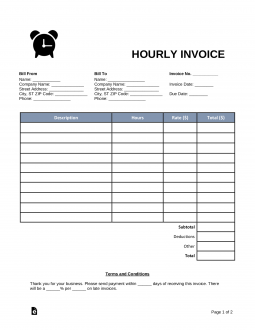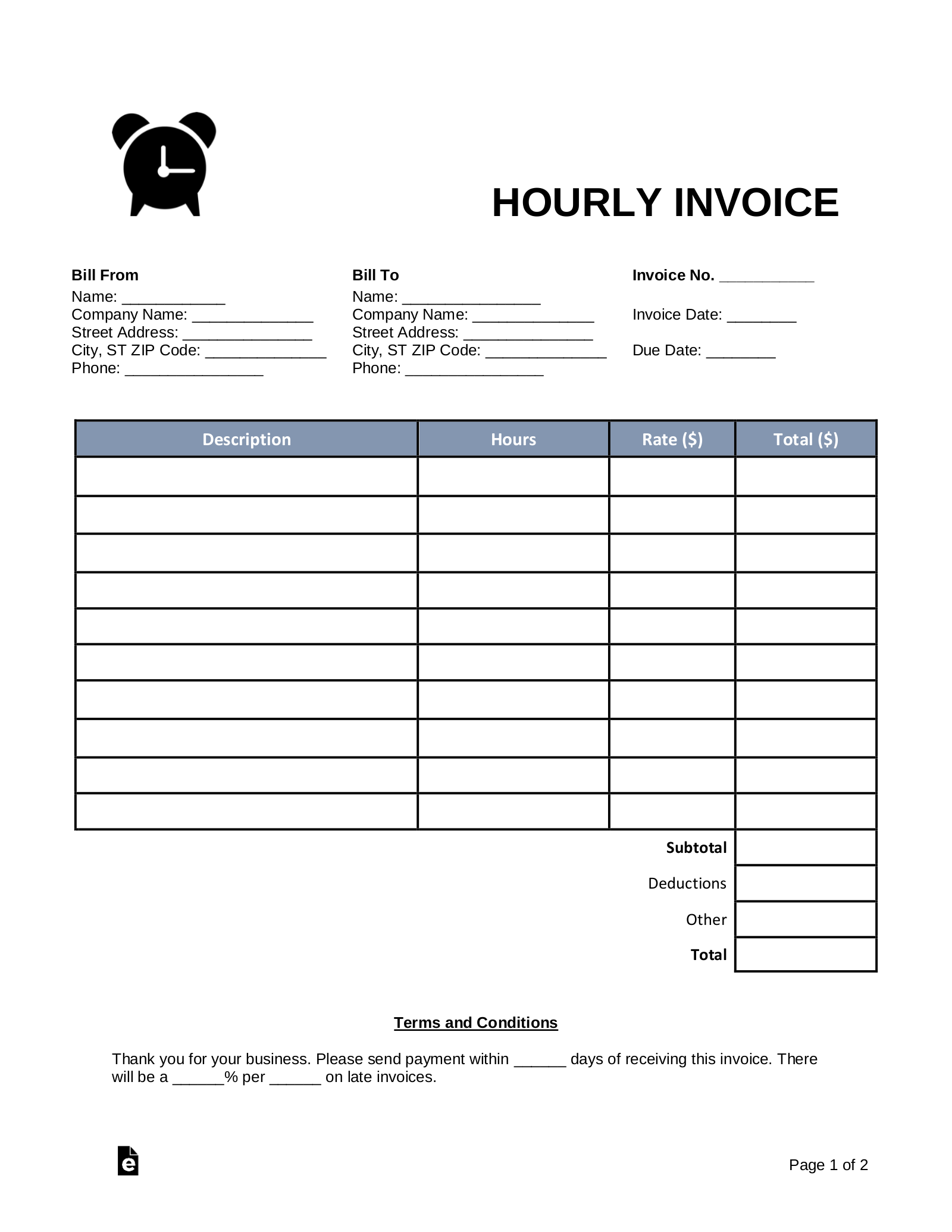Updated March 27, 2023
An hourly invoice is a document that tracks hours worked by an employee or contractor being paid an hourly wage. The employee or contractor may enter their information and hours worked at the end of their shift and the company or hiring individual may calculate total hours and pay to properly compensate the employee or contractor.
Elements of an Hourly Invoice
This document is both a formal record of work and a request for payment – so it should be completed with care. In addition to contact information, dates, and other logistical basics, the Hourly Invoice should include:
- Descriptions of all tasks completed, and time spent per task
- The hourly pay-rate per task and total due for each task
- The subtotal that is due, any deductions, and the final balance that is due
- Terms for payment and penalties for lateness
Other elements will vary with the specifics of the work arrangement and the local labor laws. In some states, for example, the employer may be required to withhold state income taxes from wages. Overtime rules may also differ.
How to Use an Hourly Invoice
1. Minimum wage and pay rates
As a baseline, employers are generally required to pay workers at least the federal minimum wage. Some states have legislated even higher wage floors, and wherever a state minimum is higher, it takes precedence over the federal standard.
There are some exceptions to the minimum wage law. Servers and other employees whose earnings come primarily from tips are subject to a lower minimum wage – though rules for tipped employees vary by state too. Teen workers may be paid less for a brief period just after hire, and independent contractors are not covered by minimum wage rules. More information on wage laws can be found at the US Department of Labor’s (DOL) website.
Be aware that federal labor laws also generally require that employees be paid a higher overtime rate for any hours in excess of forty worked in a single week.
2. Tracking hours worked
Employers should establish a procedure for tracking hours. Are hours recorded on the honor system, or will workers clock in and out? How should increments of less an hour be reported? Since the invoice generally covers many working days, it is critical to ensure that employees are not merely completing it from memory at the end of the period (and possibly making costly errors).
3. Bonuses and benefits
Employers should make sure that they are in step with state and federal benefits rules. Independent contractors are generally exempt from these regulations, but full-fledged employees might be entitled to at least health insurance coverage and paid time off.
Even when not required by law, companies are often wise to provide employees with perks – whether in the form of vacation time, an annual bonus, or other incentives. It’s a clear case of spending money to make money: employees who feel recognized will usually repay in hard work and long-term loyalty.
4. Calculating final pay
If required, employers should deduct taxes before calculating the total to pay. Be sure to double-check calculations, as few things can sour a working relationship more than a paycheck that comes out short.



